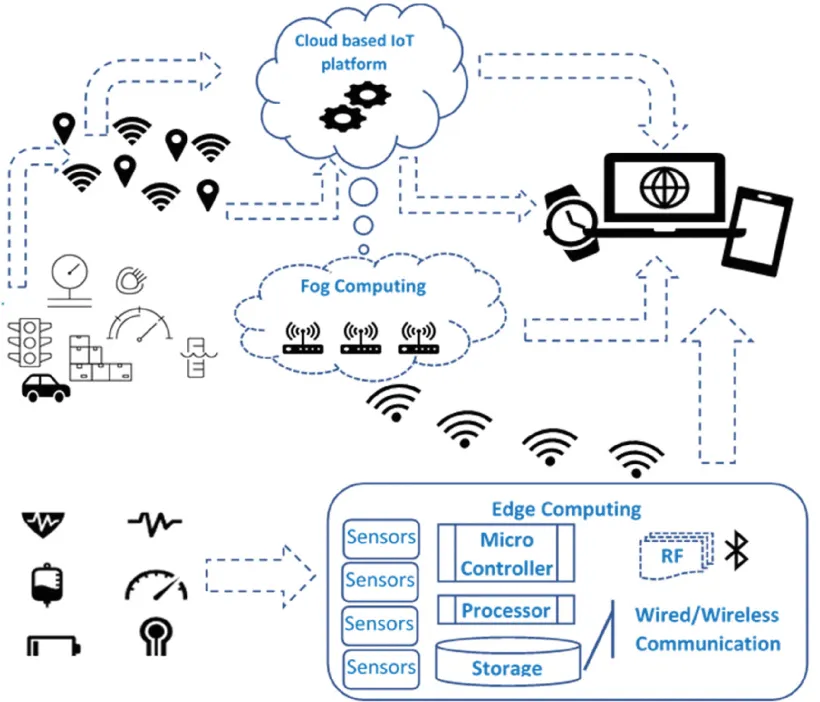Artificial Intelligence-Based Sensors for Next Generation IoT Applications: A Review
The advancement in sensor technology knows no bounds. It isn't easy to imagine our life today without sensors. They are in our homes, malls, workplaces, hospitals, and restaurants. Their use ranges from entertainment to security. Integrating artificial intelligence (AI) and the Internet of Things (IoT) in embedded smart sensing systems has its challenges. But its latest development and integration in health care, security, and communication are unimaginable.
Various IoT architectures are defined by different scientific organizations. Generally, it follows Perception > Transport > Processing > Application. After data is perceived through physical IoT devices, it is transported to the appropriate cloud or edge device for processing. In the processing phase, various AI data manipulation techniques such as classification, calculation, and sorting converts raw data into information, the output of which is then presented through an application.
IoT follows four communication models: device to device, device to the cloud, device to the gateway, and back-end data sharing. As per their name, the protocols follow source-to-destination communication. Transmission Control Protocol (TCP), User Datagram Protocol (UDP), and Internet Protocol version 4 (Ipv4) are some of the standard communication protocols that follow the popular back-end data sharing. Although these protocols enable lightweight and efficient systems, they are susceptible to security attacks. Secure Sockets Layer/Transport Layer Security are some of the techniques used to combat security.
On the other hand, artificial intelligence has taken hold of our lives by a substantial amount. Advancements in AI in Machine Learning, Deep Learning, and Natural Language Processing have benefitted many industries. Integration of AI in IoT can be helpful to enhance security, boost operational efficiency, and increase the scalability and robustness of the system. Since IoT is expanding exponentially, a vast amount of data is generated daily from all sorts of gadgets. AI provides a way of dealing with Big Data through effective investigation. IoT and AI collectively forming Artificial Intelligence of Things (AIoT) will impact a lot of lives in a significant manner.
IoT applications in smart transportation need to process heterogeneous signals and data; AI applications help in various predictions such as destination, traffic signal, and pollution. In industrial IoT applications, AI is applied to optimize capturing of images and processing sensors. It also helps in faster transmission of data, mitigating problems of congestion in the IoT network. In healthcare, we can see that IoT sensors collect body signals, and with the methods based on deep neural networks, real-time monitoring of the heart rate, oxygen, and stress is made possible. In environmental applications, sensor data collected is analyzed by artificial neural network methods to determine air quality, water pollution, etc. A convolutional neural network along with IoT sensors is an excellent combination for progress in agricultural applications.
As the convergence of IoT and AI has opened up doors to myriad opportunities, it has also brought challenges to interoperability, scalability, latency, and resilience. Nevertheless, advanced research in this emerging domain will eliminate challenges and continue to make our lives better.




